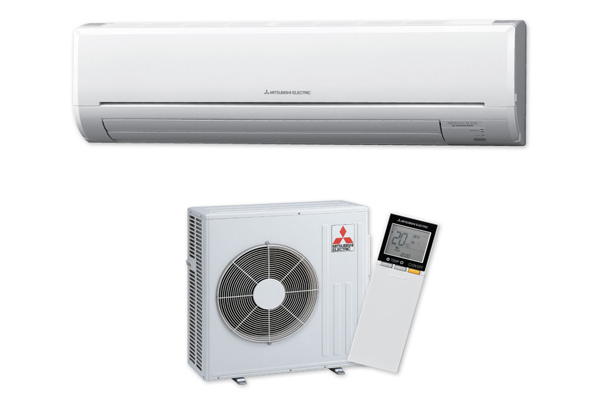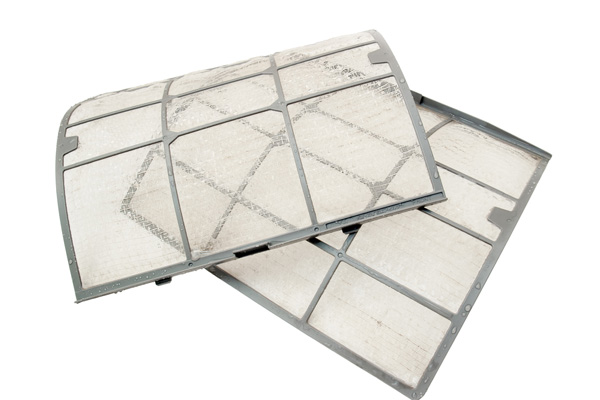
There are two main components in ductless mini-split systems – the outdoor units and the ductless indoor air handlers. Mini-splits are capable of generating cold and hot air, which makes them suited for areas that experience both cold and hot weather all year round. As long as the mini-split system is the correct size and capacity, you can enjoy optimum comfort regardless of the season.
The indoor air handler must be working properly to ensure that the system remains efficient. If the air handler is functioning as it should, the outdoor unit will continue to operate efficiently and ensure that it maintains the proper indoor temperature in your home.
What Are Ductless Indoor Air Handlers?
The air handler is the component of a two-part HVAC system that an HVAC contractor installs indoors. This is the component out of which conditioned air is released into the home. The air may be cool or warm, depending on your preferred setting. In central HVAC systems, an HVAC contractor usually installs the indoor air handler in the attic, basement, or dedicated closet. In ductless mini-split systems, however, the heating and cooling technician usually installs the indoor air handler on the ceiling, floor, or wall.
How Does An Air Handler Work?
The refrigerant cools the warm air. The air handler pushes the air to the outdoor unit of the HVAC system. The warm air is then forced through the outdoor unit and released outdoors. The refrigerant is now cooled and is moved back to the indoor air handlers through the copper coils. It is released as cool air in your home by blower fans. For home heating, this process is reversed. The HVAC expert often installs the outdoor unit in the back or side yard close to your home.

What Are The Parts Of An Indoor Air Handler?
Indoor air handlers play a key role in ensuring that your HVAC system works properly. They help regulate temperature and circulate air inside your home. The indoor air handler has several components that help deliver the required home comfort necessary to keep your indoor conditions at their most ideal. These components include:
Evaporator Coil
The evaporator or indoor coil is a major component of the refrigeration cycle of the HVAC system. To produce cool air, the coil eliminates humidity indoors which helps lower room temperature. When air passes over the coil, the air is cooled, then pushed through the indoor unit and released into the rooms. To produce warm air, the coil heats up the air that is passed over it before it is released into indoor spaces.
Blower Motor
The blower motor physically moves and circulates air indoors. Blower motors typically come in three speeds: single-speed, multi-speed, and variable-speed. Here’s a look at what to expect from these speeds.
- Single-Speed: A single-speed blower motor has a single fixed speed. The motor simply cycles on and cycles off, depending on how the thermostat or control system is set. This type of motor runs at 100% capacity when operational.
- Multi-Speed: Multi-speed blower motors offer several speeds to choose from to suit your comfort needs at home. When the thermostat or control system is set at high-demand, the motor will work at 100%. If the thermostat is set at a low-stage setting, the motor will work at a slower speed. However, even with the reduced motor speed, the system can still reduce humidity, remain energy-efficient, and maintain consistent home comfort better than a single-stage system.
- Variable-Speed: In a variable-speed motor, the fan speed will depend on the specific comfort requirement you have. If your air handler has a variable-speed motor, it can be set to control air circulation precisely. It can also adjust the speed automatically to run at different capacities. As such, it can increase or decrease its rate so that the exact demand for heating or cooling is met. A variable-speed motor provides improved comfort and efficiency, with quiet operation. It runs at a lower cost without compromising comfort.
Vibration Isolators
When blowers are running, they produce a vibration, which creates noise. Often, the sound that the fans make can be distracting and annoying to household members. Consequently, HVAC systems have with vibration isolators to reduce the sound. These thick rubber isolators work by dampening the sound of the blowers by absorbing and controlling soundwaves. As a result, it eliminates the vibration, preventing the sound from transferring to the structure of the HVAC system. An HVAC contractor can also insert a flexible section or a mounting bracket between the air handling unit and the mounting bracket to help control the noise.

Filter
Most HVAC systems have built-in air filters to trap dirt, dust, pollen, allergens, and other particulates and contaminants. Air filters help maintain indoor air quality and ensure that indoor air is safe to breathe. Air filters are especially helpful in reducing the risks of allergies and respiratory issues among household members who are prone to these problems.
Although window air conditioners also have air filters, these can only manage to trap larger particulates, such as pet fur. Ductless mini-splits and central ACs, on the other hand, have air filters that can trap smaller particles. Some ductless models and brands even have multi-stage filtration features to ensure that you have the cleanest and healthiest air at home.
Thermostat And Controls
HVAC systems have controls that allow you to regulate its settings. This means you can control air temperature, humidity levels, airflow rate, air quality, etc. Some models have a basic control that only turns the system on or off. There are also units that offer more advanced features such as building automation and automatic, centralized control.
Drain Pipe
When the HVAC system is in the cooling cycle, it produces air that is at a temperature several degrees lower than the natural room temperature. As a result, the surrounding air condenses and turns to liquid. The liquid, or water droplets, form on the cooling coil, fall off and is collected by a drain pan. Water from the drain pan then flows to the component known as the drain line, which takes the water away from the indoor air handler. This line usually connects to the HVAC outdoor unit, where the water is finally disposed of.
Louvers
Louvers or fins are the components through which conditioned air passes before being released into the room. In a ductless HVAC system, the louvers are adjustable. You can change the direction and angle of the warm or cool air, so it directs where it is needed. Vertical louvers direct the flow of the air from left to right while horizontal louvers direct airflow up and down. Louvers may be manually or remotely controlled. They can be fixed in one position or set in rotation mode. When louvers are in rotation mode, the indoor air handler distributes conditioned air evenly throughout the room.
Air Handler Accessories
There are actually different accessories that an HVAC technician can add to the indoor air handler to improve its function and optimize its capacity. One of these is the electric heater. It can be installed in the HVAC system’s air handling unit to supplement the heating capability of the condenser. It helps produce warm air by increasing the temperature of the coils. When air passes over these coils, it becomes warm before being distributed to the room.
Another accessory to consider is UV or ultraviolet lighting. An HVAC contractor can add UV light to the air handler to neutralize airborne bacteria and viruses. It works in tandem with the HVAC system’s air filter to purify interior air. You might also want to consider installing an air filter box or a water safety cut-out switch to enhance your HVAC system.
Repairs and Replacement Of Your Ductless Indoor Air Handler
When your HVAC system is working well, you should not have any issues whatsoever regarding the comfort of your home. However, if you are having problems with the airflow, you might have an issue with a damaged air handler or a faulty blower motor. When and if these issues show up, you need to have these components replaced. Fixing them will only offer a temporary solution. This is especially true if your indoor air handler is an older model.
It is also important that you know the early signs of a faulty HVAC air handler. Watch out for unusual sounds such as rattling or clanging noises, which could point to a damaged blower fan or loose air handler. There are many reasons why an air handler could fail. If it stops functioning correctly, do not hesitate to call your local technician to have it inspected.
Maintaining Your Air Handler
The air handler affects the energy efficiency of the HVAC system and your indoor air quality. It is important that you ensure it is working properly. To keep it in top shape, make sure to clean it regularly. Dirty air handlers circulate dirty air that can affect your health. If you fail to clean it regularly, it will also become less efficient. As a result, it will consume more energy than it should.
You should also change or clean the air filters regularly. If possible, consider installing accessories that will help improve the function of your HVAC system. A UV light, for example, will help reduce the population of harmful microorganisms to a very low level. The UV light will also help prevent the growth of mold in the air handler. Have the system undergo a tune-up by a qualified HVAC professional every year.
Check Out One Of Our Ductless Installation Projects
Case Study: Clark Mitsubishi Ductless Installation In Sewaren NJ
Conclusion
If you need to have your air handler inspected or replaced, seek the advice and assistance of a professional HVAC technician. A qualified expert will ensure that your system remains reliable all year round.
Call Skylands Energy Service For All OF Your Home Comfort Needs

A ductless system will provide you with low energy costs, increased home comfort, healthy indoor air quality, and safety. If you are ready to switch to a ductless system or have more questions, call Skylands Energy Service right away. Our NATE-certified technicians will discuss your needs and requirements to help you find the best ductless HVAC system setup for your home. We offer a range of heating and cooling services, including installations, repairs, replacements maintenance, and more. We also provide free in-home estimates. Call Skylands Energy Service today.
Contact us now at (908) 707-1776 to find out more!
The post Ductless Indoor Air Handlers: What You Need To Know appeared first on Skylands Energy.
from Skylands Energy https://www.skylandsenergy.com/ductless-heating-cooling/ductless-indoor-air-handlers
via IFTTT

No comments:
Post a Comment